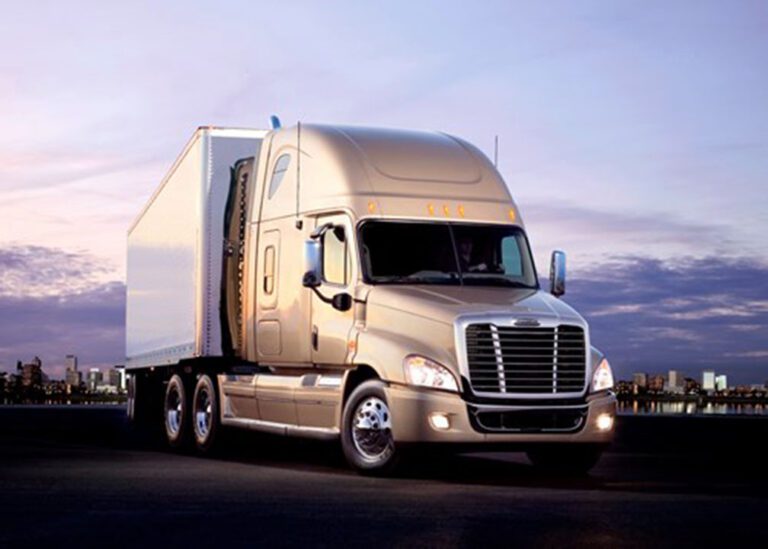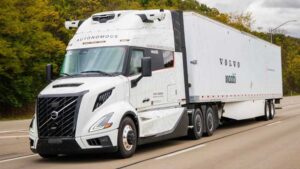With all the predictions of a recession coming — or perhaps that it’s already here — it might be tempting to think carriers will slow down on purchasing of new trucks.
Well, that’s not happening. More new Class 8 trucks were sold on the U.S. market in November than in any other November for 22 years, according to data received from Wards Intelligence. November sales even exceeded the record-setting year of 2006, when the market was buoyed by carrier pre-buys of 2006 trucks from buyers hoping to avoid the pitfalls of new EPA diesel engine emissions standards for heavy-duty trucks that took effect with the 2007 model year.
In 2022, November sales of 23,075 trucks were reported by manufacturers, an increase of 212 trucks (0.9%) over October sales of 22,863. November was the second-highest sales month of 2022, trailing behind only August. Since December is typically the strongest truck sales month of the year, the November numbers could indicate an exceptionally strong finish to the year.
Compared with November 2021, when supply chain issues wreaked havoc on OEM assembly lines, sales this November were up by 39.5%, or 6,536 units.
Strong truck sales are expected to continue into 2023, according to ACT Research’s latest release of the North American Commercial Vehicle OUTLOOK.
“In line with expectations, the industry has witnessed a surge of Class 8 orders into year end,” wrote Kenny Vieth, president and senior analyst at ACT. “With strong demand in place and inflation metrics moderating, we are now more convinced that first half build rates will be sustained deeper into 2H’23.”
ACT reported North American Class 8 net truck orders of 33,000 in November, pushing the backlog of trucks waiting to be built to nearly nine months.
“OEMs having opened their orderboards for 2023 more broadly, and ongoing pent-up demand — with tailwinds from strong carrier profitability and elevated fleet age — is proving resilient,” said Eric Crawford, vice president and senior analyst at ACT. “We continue to expect a freight recession, and an eventual economic recession (mild to medium in magnitude), but OEMs at this point have clear visibility to a strong 1H’23 (barring any unforeseen cataclysmic events).”
FTR reported preliminary North American Class 8 truck orders of 34,300 units. While that number is down from September and October order numbers, it’s a whopping 254% higher than November 2021. November is still the third-highest order month of 2022. In the FTR report, Jonathan Starks, chief executive officer and chief intelligence officer, commented, “The market remains strong despite the economic uncertainties, and production still will be limited to some extent by supply chains and labor.”
Order and production numbers from various reporting agencies often differ because of differences in reporting manufacturers and dates.
While orders for new trucks were high in September and October, the used tractor market was considerably softer. October same dealer sales declined by 19% from September numbers, according the ACT’s State of the Industry: U.S. Classes 3-8 Used Trucks. Compared to October 2021, sales declined 42%. The average price of used tractors rose by 15% compared to last October, while the average age and average odometer mileage rose slightly.
The sales decline seems unusual in light of strong new truck sales and orders, but carriers holding on to current fleet trucks longer because of wait times for new trucks can keep the number of available used trucks lower than usual, resulting in fewer trucks sold and higher prices.
Of the individual manufacturers, Freightliner is responsible for 38.1% of all U.S. new Class 8 truck sales in 2022, about the same percentage as last year. In November, the company reported sales of 8,453, down 6.7% from 9,056 in October but 37.8% ahead of November 2021 sales of 6,134.
The other Daimler-owned U.S. company, Western Star, is at the opposite end of the new Class 8 spectrum with November sales of 465, up 11% from 419 sold in October but down 7.6% from November 2021 sales of 503. Western Star is responsible for 2.5% of sales this year.
International sales of 3,016 in November showed a decline of 0.9% from October, but an eye-popping increase of 129.5% over last November, when the company sold 1,314 Class 8 trucks. For the year to date, the company has increased sales by 16.8% compared to the average increase of all OEMs combined (14.2%). The company’s market share increased from 12.3% in 2021 to 12.6% in 2022. International appears to have put regulatory issues about its engines and emissions control systems in its rear-view mirror and is performing well under Traton Group ownership.
Volvo’s numbers look sad for November — but in a year-over-year comparison, the OEM increased sales over 2021 by 32.3%, the largest percentage of sales growth of any of the major manufacturers. November sales of 2,121 were down 18.6% from October’s 2,606, but still accounted for 3.6% of November 2021 numbers.
Sibling Mack hasn’t fared as well for 2022. November’s 1,665 trucks sold was 25.4% higher than October’s 1,328, but the year-over-year comparison isn’t as positive. Class 8 sales at Mack are down 7.2% from the same point in 2021, and its percentage of the market has shrunk from 8% to 6.5%. Mack sells a healthy percentage of its Class 8 trucks to the vocational market, which isn’t as dependent on over-the-road freight rates.
Peterbilt’s November sales of 3,612 ran 6.7% ahead of October numbers and 27.1% ahead of November 2021 sales. For the year to date, Peterbilt sales are 16.2% ahead of last year’s pace and the company has sold 15.2% of new Class 8 trucks on the U.S. market.
Kenworth sales of 3,743 was an increase of 23.6% over last November. For the first 11 months of 2022, the company has sold 12.5% more Class 8 trucks than for the same period last year and is responsible for 14.3% of the U.S. market.
With sales to date of 225,360 as of the end of November, the U.S. new Class 8 market has already surpassed the 2021 full-year total of 221,971. A very strong December should push sales over the quarter-million truck mark.
Cliff Abbott is an experienced commercial vehicle driver and owner-operator who still holds a CDL in his home state of Alabama. In nearly 40 years in trucking, he’s been an instructor and trainer and has managed safety and recruiting operations for several carriers. Having never lost his love of the road, Cliff has written a book and hundreds of songs and has been writing for The Trucker for more than a decade.














